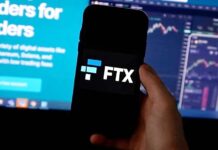Delving into the Labyrinth
The US financial market, an elaborate tapestry of multifarious institutions, products, and services, underpins the country’s economic fabric. This dynamic system orchestrates the ebb and flow of funds between savers and borrowers, catalyzing investments, and propelling economic growth. Embark on an expedition to demystify the integral constituents of the US financial market, its regulatory framework, and its modus operandi.
The Architectural Pillars: Financial Instruments and Institutions
Financial Instruments: A Myriad of Options
Navigating the US financial market, one encounters a dazzling array of financial instruments – contracts or agreements symbolizing a claim on assets or cash flows. Stocks, bonds, options, futures, and derivatives emerge as quintessential instruments empowering individuals, corporations, and governments to amass capital, mitigate risks, and invest in diverse assets.
Financial Institutions: The Market’s Custodians
Indispensable to the financial market’s vitality, financial institutions function as intermediaries, bridging the gap between savers and borrowers and expediting transactions. The US market’s custodians encompass commercial banks, investment banks, brokerage firms, insurance companies, and credit unions.
The Battleground: Stock Exchanges and Over-The-Counter Markets
Stock Exchanges: The Centralized Arena
An intricate web of stock exchanges underlies the US financial market, providing centralized hubs for buyers and sellers to negotiate financial instrument trades. The New York Stock Exchange (NYSE) and the Nasdaq, colossal and renowned, epitomize the United States’ stock exchanges. These platforms foster a transparent, efficient trading ambiance, guaranteeing fair transaction prices for buyers and sellers.
Over-The-Counter (OTC) Markets: Unruly Frontiers
Contrasting stock exchanges, OTC markets constitute decentralized networks where financial instruments trade directly between parties, devoid of centralized exchange supervision. OTC trading frequently encompasses less liquid, intricate financial instruments like derivatives or small-cap stocks. The opacity of OTC markets necessitates vigilant due diligence by investors during transactions.
The Guardian: Safeguarding the US Financial Market
Within a formidable regulatory framework, the US financial market functions, striving to preserve integrity, stability, and fairness. Key watchdogs include the Securities and Exchange Commission (SEC), the Financial Industry Regulatory Authority (FINRA), and the Commodity Futures Trading Commission (CFTC). These agencies formulate and enforce rules and regulations to shield investors, thwart fraud, and champion transparency.
The Monetary Tides: Funds’ Odyssey through the Market
The US financial market orchestrates the seamless flow of funds from savers to borrowers. Savers, including individuals and institutions, entrust their funds to financial institutions, such as banks and credit unions. Subsequently, these institutions channel funds to borrowers—businesses, governments, or individuals—to finance operations or investments. This mechanism ensures efficient fund allocation, stimulating economic growth and wealth-creation opportunities.
Conclusion: The Market’s Enduring Significance
A convoluted, ever-evolving entity, the US financial market remains an economic linchpin. Comprehending the market’s key components, including financial instruments, institutions, stock exchanges, and the regulatory framework, empowers investors to make informed decisions and partake in the wealth-generating process. As the US financial market adapts to emerging challenges and opportunities, its paramount role in shaping the nation’s economic landscape will undoubtedly persist.
Google News | Telegram
















